If you have ever accessed the Device Manager on your Windows, you may have noticed that a tab for RAM is missing. So where is RAM in the device manager?
Well, the simple answer is that RAM does NOT exist in the Device Manager at all. Hence, you cannot find it listed there.
There are many reasons why RAM does not show up in the Device Manager. It does not have any drivers and hence cannot be managed because RAM is a volatile memory, so intrinsically, it does not hold any information permanently to have any link to the Device Manager.
Perhaps the RAM has intentionally been designed to be unmanageable by a user through Windows to safeguard regular operation.
However, the gist of the topic is that you cannot find RAM in the Device Manager because it does not exist or belong there.
TABLE OF CONTENTS
So Where is RAM in Device Manager?
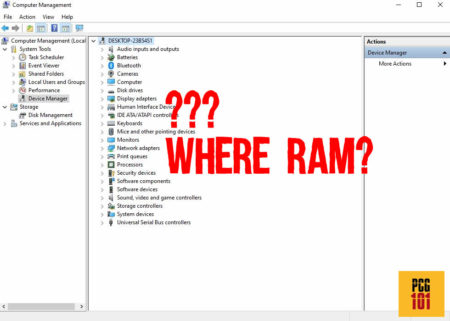
People often believe that RAM is listed in the Device Manager, so its drivers can be updated. However, that is not the case.
RAM does NOT have any drivers. So if your RAM is running slower than expected, drivers are certainly not the issue here.
A slower RAM can be due to many reasons, such as a slower frequency, a wrong RAM slot, or a bad RAM module.
A quick fix will be to enable an XMP profile for your RAM if your motherboard and RAM support them.
What is XMP, and How Does It Help the RAM?
So, if you are having trouble with your RAM, XMP is your friend.
XMP stands for Extreme Memory Profiles. Intel developed this to modify the memory settings. Overclockers often use this.
The XMP profiles essentially take the guessing out of the question, and it saves you from the hours of tweaking to get the RAM performing to its optimal levels.
In some ways, you CAN think of XMP profiles as the DRIVERS for the RAM, as enabling them can improve the performance.
So How Do XMP Profiles Work?
Well, each RAM manufacturer bench tests their RAM to find the best settings to run on.
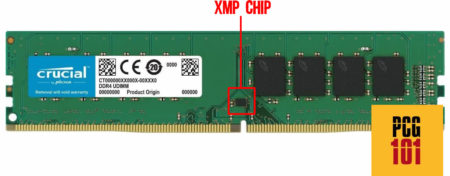
They then save those settings to the RAM on a dedicated XMP chip.
XMP profiles are ONLY available to the RAM if rated higher than BASE FREQUENCY.
For instance, the base, or the DEAULT FREQUENCY, of a DDR4 RAM is 2133 MHz. Running DDR4 RAM at this frequency requires no XMP profiles.
If you have a DDR4 RAM stick at frequencies higher than 2133 MHz, such as 3200 MHz, 3600 MHz, etc., then it will need to have an XMP profile added by the manufacturer.
Also Read: Which RAM Slot to Use?
How to Enable XMP Profile?
XMP is enabled through the motherboard BIOS. It cannot be allowed through the OS or the device manager.
However, your motherboard AND RAM must first support the XMP profile to enable it.
Secondly, your motherboard has to support the frequency of your RAM. Not ALL motherboards support high-frequency RAM.
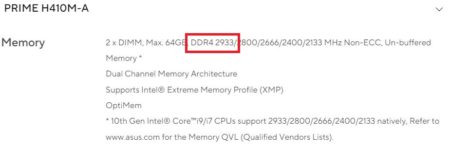
The motherboard above supports RAM up to 2933 MHz. DDR4 RAM with 3200 MHz, 3600 MHz, etc., will clock down to 2933 MHz when installed on this motherboard.
Again, all RAMs work at their base speeds UNTIL you enable the XMP profile from the motherboard BIOS.
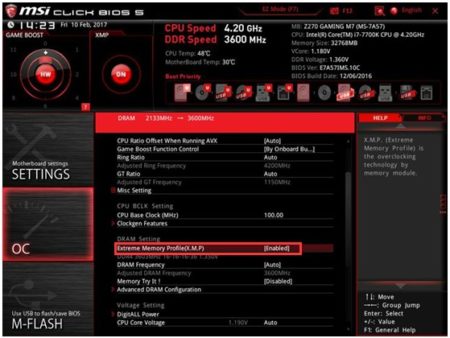
Also Read: Will DDR5 RAM Work on DDR4 Motherboard?
How to Check Your RAM Information?
Since you cannot find RAM in Device Manager, you can use several other methods to locate the information regarding what RAM you have.
1. Checking RAM in ‘About.’

On Windows 10:
- Go to the Search Function in the Windows Task Bar
- Type “About Your PC“
- Press the utility that comes up.
This can give you basic information regarding the amount of RAM you have on your system.
Also Read: What to Do After Upgrading RAM?
2. Checking RAM Through the Command Prompt
Another relatively simple way to check the details regarding your RAM is to use the Command Prompt.
On Windows 10, access Command Prompt by typing it in the Search function.
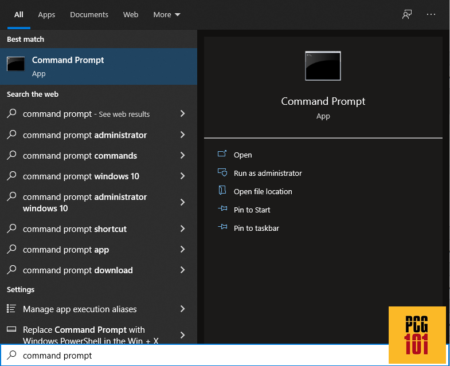
With the Command Prompt open, type in the following code
wmic MemoryChip get DeviceLocator, Manufacturer, PartNumber, capacity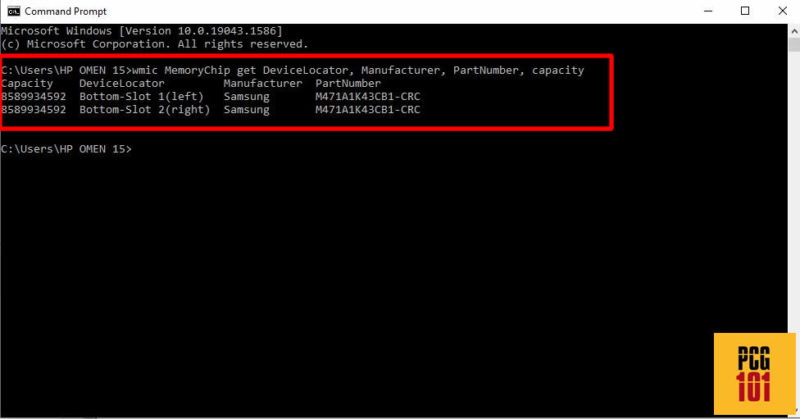
The capacity this shows is per slot and in terms of BITS. So when the ability above reads 8589934592, it refers to 8 GB.
The system above has a total of 16 GB of RAM.
For the complete list of strings of code you can use for RAM, Windows has a comprehensive article on it: Win32 PhysicalMemory class.
3. Checking RAM Through Task Manager
Task Manager is yet another straightforward method to check the detail regarding your RAM.
The best part about this method is that it gives you the details regarding the amount of RAM you have and tells you its current usage.
On Windows 10, head over to the Task Manager by clicking the Task Bar and selecting Task Manager.
You can also access it by pressing CTRL+ALT+DEL and then selecting Task Manager from the menu that comes up.
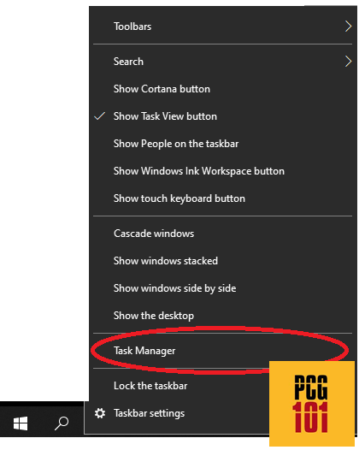
With the Task Manager open, head to the Performance tab and look for the Memory section on the left-hand menu.
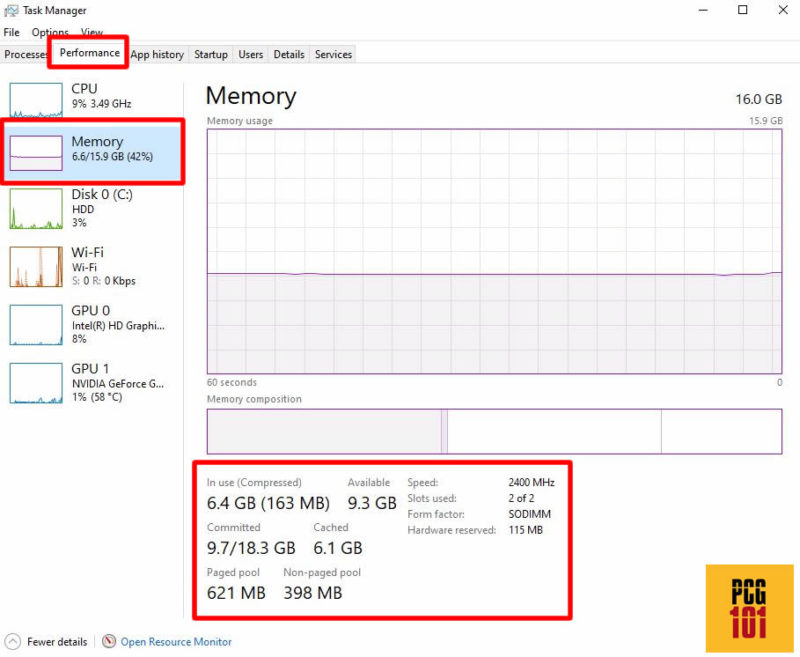
As you can see, the Task Manager details your RAM amount and the total RAM being utilized.
In ideal cases, you do not want the RAM to reach 100% usage, which can cause lags and stutters in your system.
If your RAM is reaching 100% usage often, you need to close off some applications, or it is time for an upgrade.
4. Checking RAM through CPU-Z Utility
If you want the most comprehensive details regarding your RAM, CPU-Z is perhaps the best utility.
CPU-Z is a very light third-party app that is free to download and use.
For this:
- Head over to the CPU-Z official website.
- Download and Install the latest version.
- With the utility open, look at the Memory and the SPD tab.
The Memory TAB shows you the RAM type, total amount, running frequency, and information regarding its CAS Latency.
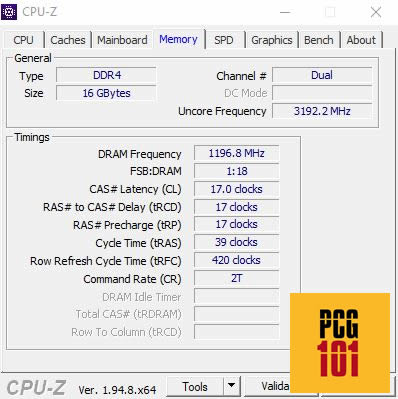
The SPD section shows you information regarding RAM in each slot, its manufacturer, model number, etc.
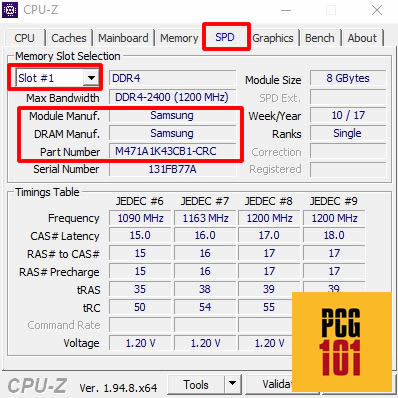
Also Read: Can You Reuse Old RAM Sticks?
Final Words
So where is RAM in Device Manager? Unfortunately, as discussed above, RAM does NOT exist in the device manager.
If you want to learn its details, you must use different methods.
If you suspect your RAM isn’t performing to its optimal level, check whether it has XMP support, and if it does, enable it from the motherboard.
FREQUENTLY ASKED QUESTIONS
1. How do I increase the amount of RAM in Device Manager?
You cannot increase the amount of RAM in Device Manager, as it is a software tool used for managing hardware components in Windows.
To increase the amount of RAM in your computer, you will need to physically install additional RAM modules into the appropriate slots on your computer’s motherboard.
2. Can I disable or remove RAM from Device Manager?
No, you cannot disable or remove RAM from Device Manager, as it is a hardware component that is physically installed in your computer.
However, you can troubleshoot issues related to RAM using Device Manager, such as checking if your RAM is working properly or updating your drivers.
3. How do I troubleshoot issues related to RAM in Device Manager?
To troubleshoot issues related to RAM in Device Manager, you can run the Windows Memory Diagnostic tool to check for memory errors or perform a clean boot to identify any conflicts with other software.
You can also check for updated drivers for your RAM modules in Device Manager, or physically remove and reinstall your RAM modules to ensure they are properly seated in their slots.
4. How do I allocate more RAM to a specific program in Device Manager?
You cannot allocate more RAM to a specific program in Device Manager, as it is a tool used for managing hardware components in Windows.
However, you can adjust the amount of RAM allocated to a specific program through the program’s settings or by using third-party software designed for this purpose.
5. What is the maximum amount of RAM that can be used in Device Manager?
There is no maximum amount of RAM that can be used in Device Manager, as it is a software tool used for managing hardware components in Windows.
The maximum amount of RAM that can be used in your computer will depend on the specific hardware configuration of your computer, including the number of RAM slots available, the type of RAM supported by your motherboard, and the maximum amount of RAM that your operating system can support.
Also Read: Intel vs. AMD RAM – Are RAMs for Intel and AMD CPUs Different?

Fantastic article. You’re probably getting a lot of hits but not much engagement so hopefully this comment helps.
Appreciate the Gesture 🙂
Wow, this article gave me all the information I wanted. Thats a rare find, thank you very much.
Btw. the RAM capacity is in bytes not bits, else you would have two 1GB RAM sticks, which would be quite funny for an Omen PC ^^